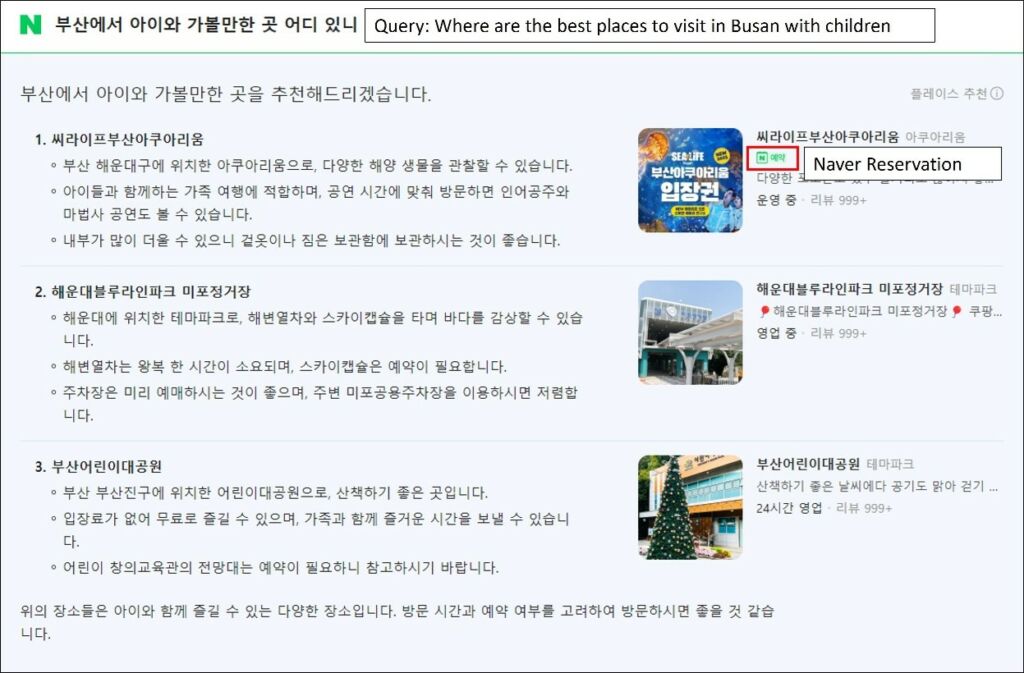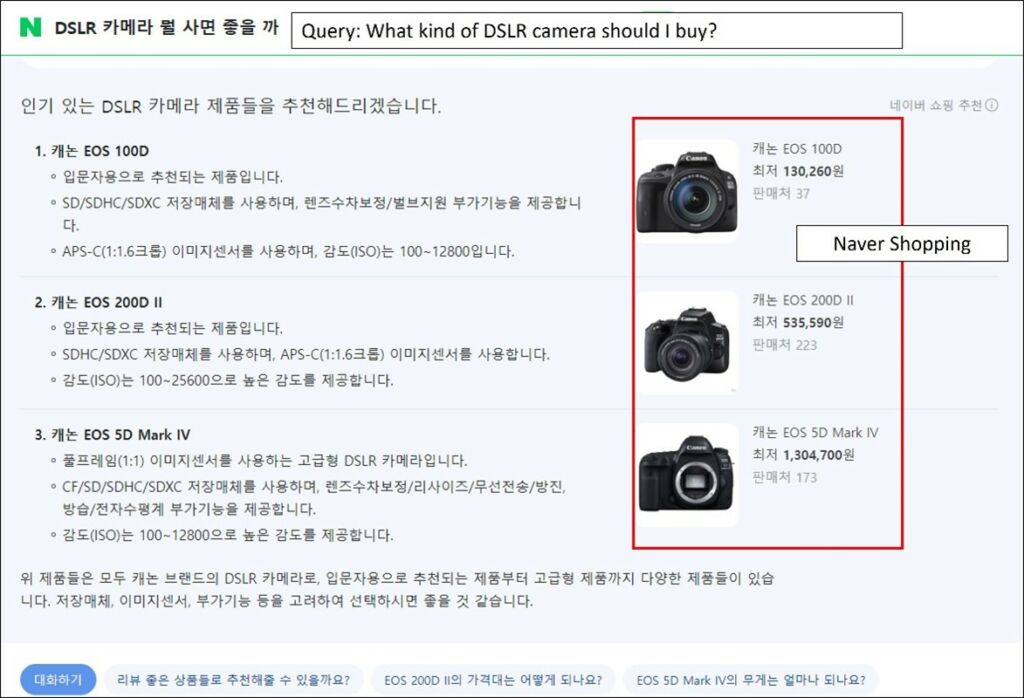Leverage Naver’s Generative AI: Cue: To Reach Korean Audiences
In sync with the global wave of generative AI, Naver’s search interface has evolved, leveraging artificial intelligence (AI). Naver applied the generative AI search service ‘CUE:’ to the integrated search on December 1, 2023.
Naver CUE: is an AI service specialized in search, focusing on providing a variety of information for user needs. Unlike the conventional Naver integrated search, CUE: is designed to decipher complex, conversational queries. For instance, typing ‘Find me places in Hongdae where I can drink” to CUE:, it will find restaurants in Hongdae where you can enjoy drinks together. Without AI assistance, traditional searches would demand at least two separate queries like ‘Hongdae restaurants’ and ‘Hongdae bars’ to yield comparable information.
What is Naver CUE:
Naver Cue: is a new AI search service introduced by Naver for a new search experience. This AI-powered service is based on search service usage patterns, providing results that suit the user’s search intent and connecting Naver’s various services to help with search.
It incorporates reasoning, search planning, tool usage, and retrieval-augmented generation technologies into a language model. It summarizes information, provides effective search results in sentence format and provides an expanded search experience through a new interface.
Currently, Cue: is available on PC and will be expanded to a mobile version in the future. To use the CUE: service, users need to log in to Naver and activate it separately.
How Naver CUE: works
Image source: Naver CUE: website
Cue: searches for information related to the user’s question based on Naver’s rich content, including integrated search, news, shopping, places, and movies, and then summarizes the content to generate useful answers. It then distills this information to furnish concise, pertinent answers while referencing the webpages consulted to generate these answers. Additionally, it learns search users’ usage pattern data to provide information most appropriate to the user’s query intent. Due to these characteristics, it may not provide the same answer to each user for the same query.
How to Leverage Naver CUE:
Harnessing Naver’s diverse suite of services, CUE: deciphers user intent and furnishes customized answers, forging connections to seamlessly access desired information.
- Ask specific and clear questions. To best use Cue:, it’s a good idea to ask specific, clear questions. It is effective to specifically explain the purpose for which you want information or help.
- Ask questions as if you were having a conversation. Your interaction with Cue: will go more smoothly if you ask questions in a natural, conversational way, like everyday conversation.
Sample Queries for Reference:
“Can you share a delicious chicken stir-fry recipe along with the ingredients to purchase?”
“Where can I find a café with a picturesque ocean view in Aewol, Jeju Island?”
“Update me on the latest movie releases.”
“What exactly is the buzz around tea omakase?”
WANT DIGITAL INSIGHTS STRAIGHT TO YOUR INBOX?
Advantages: Seamless Integration with Naver Services
CUE: leverages its own service in their answer, for example, Naver Place or Naver Reservation system, enhancing convenience for users. By intelligently linking queries with Naver services, it streamlines the user journey.
When we queried “Where are the best places to visit in Busan with children?”, Naver CUE: showed three tourist attractions. Specifically, if any of these places were integrated with Naver’s reservation system, like our client SEA LIFE Busan Aquarium in this example, it would display its Naver reservation, providing convenience to the user, and the brand using the Naver service can reach the right customers.
Moreover, it seems to help provide information tailored to the characteristics of the product. When we searched the query “What kind of DSLR camera should I buy?”, then CUE: provided a Naver shopping page for cameras in various price ranges, with additional questions that users may be curious about were displayed, such as “What is the price range of the EOS 200D II?”, “What is the weight of the EOS 5D Mark IV?”.
According to Naver’s Customer Center, “Merely integrating generative AI into existing searches isn’t enough to enhance performance.” Emphasizing the importance of rich content, they stated, “Naver’s extensive content, such as blogs and cafes, plays a pivotal role in enriching the service.” Naver highlighted Cue:’s diverse services, spanning from grocery shopping to location reservations, catering to diverse user needs.
Data Collection and Utilization in Naver CUE:
According to Naver CUE: Customer Center, information related to service usage, including queries, feedback, and reports, is collected and used within agreed-upon parameters upon registration as a Naver member. Collected data might be utilized for service provision, query resolution, abuse prevention, etc., stored for up to 9 months after collection. De-identified data aids service enhancement, statistical analysis, AI learning, and new service development, not stored beyond a year. All Cue:-collected data is periodically purged as per internal policies. Users can opt out of data utilization for AI learning and new service development via the profile settings.
In Conclusion
Presently, Cue: is currently available on PC and will be expanded to a mobile version in the future. The CEO of Naver Search CIC, said, “Users can reach the search results they want more easily and quickly by applying Cue: to search. Naver has the advantages of generative AI technology, as the world’s only platform with both content and services.”
Naver Cue:’s synergy with various Naver services like Shopping, Place, and Blog enhances user accessibility. To optimize your Korean Naver search experience, consider leveraging Naver’s platforms to embrace Naver CUE:’s potential.










